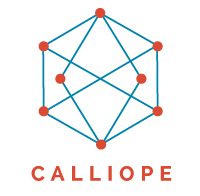Pennsylvania Executes one of the First Residential Energy Efficiency Loan Bundling Transactions
After long and diligent work, my own Commonwealth of Pennsylvania announced last week that it had successfully bundled 4,700 residential energy efficiency loans, and obtained $23 million in cash and $8.3 million in deferred payments, for a projected total of $31.3 million. The press release is available here.
This is a holy grail of sorts. People have been saying for years that energy efficiency loans should be able to be bundled and sold, a la mortgages and credit card loans. In theory, bundling the loans would allow private capital to invest in pools of energy efficiency loans, as opposed to individual projects, injecting more capital into the market for energy efficiency upgrades and lowering the interest rates.
Although it seemed like a workable idea, few before the Pennsylvania Treasury had accomplished it. Energy efficiency loans were considered too weird, too complicated, too risky, etc. to be bundled. Most critically, financial institutions mostly considered energy efficiency loans to be too risky because there was an insufficient amount of data on energy efficiency loan defaults.
In light of these issues, the Pennsylvania transaction still does not really recognize energy efficiency loans as a unique asset class. By this I mean that the stream of income from the saved energy is not being recognized as part of the transaction. As far as the investors are concerned, the loans could be for HVAC equipment or Manolo Blahniks, they are all just unsecured consumer loans. In addition, Treasury still had to put up significant credit enhancements to make the loan pool desirable.
In addition, the transaction took a long time and had high transaction costs. A private entity probably would not have had the resources or perservernce needed to cross the finish line. Future transactions will need to be more standardized, both with in terms of assets and documentation.
Nonetheless, the Pennsylvania transaction and the many lessons its staff learned along the way may be a very important step in accessing greater pools of capital for energy efficiency.

 Shari focuses on energy, environmental and building code policy, representing international companies, non-profits and trade associations in their policy and communications campaigns
Shari focuses on energy, environmental and building code policy, representing international companies, non-profits and trade associations in their policy and communications campaigns

